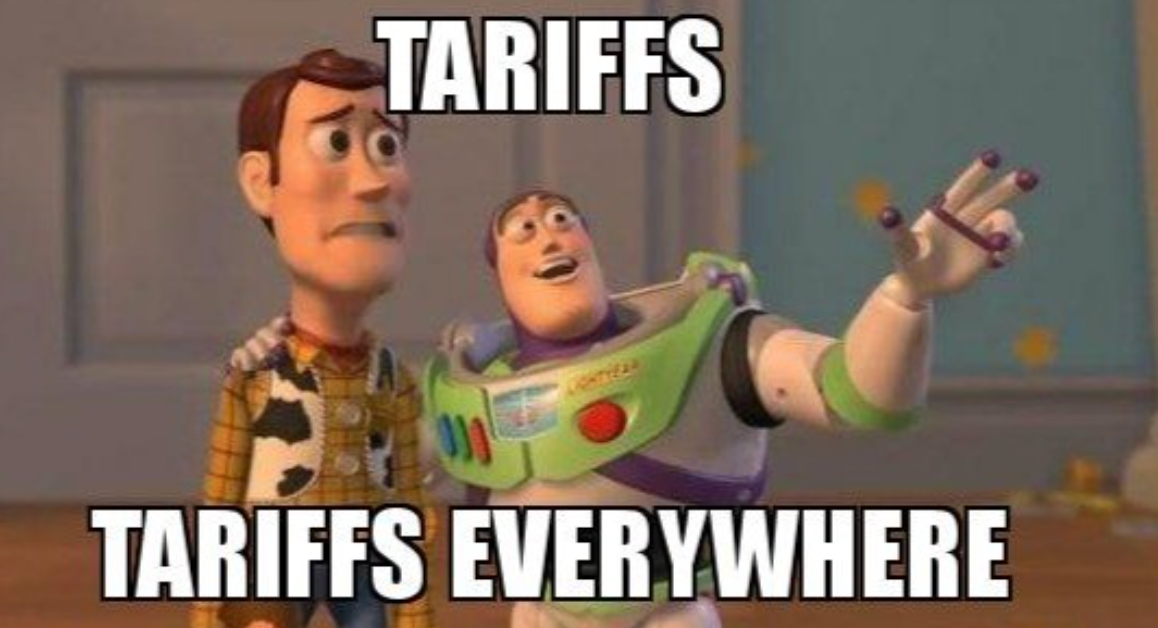How to Use a Predictive Tariff & HS Code Engine with Machine Learning for DTC Brand CX
.png)
In a nutshell:
- Most cross-border issues stem from inaccurate HS code classification.
- A predictive tariff engine powered by machine learning automates product mapping and duty rate calculation.
- This reduces manual work, customs delays, and checkout drop-offs.
- DTC brands gain accurate landed-cost visibility, faster clearance, and higher trust at checkout.
Understanding Predictive Tariff & HS Code Engines for DTC Brands
So you’ve expanded internationally.
Now it’s time your operations kept pace. But unexpected tariffs, wrong duty estimates, and customs holds still erode CX and shrink margins. If this sounds all too familiar, you’ve come to the right article.

The good news is that machine learning is shifting the game. Predictive tariff and HS code engines give you landed-cost accuracy, faster clearance and fewer hiccups at checkout. This goes beyond compliance and helps you deliver global growth that actually scales.
The Problem with Tariffs & HS Codes Today
Many DTC brands rely on manual or rule-based HS code lookups. That leads to two critical issues:
- Misclassification is expensive. A wrong 6-digit code can trigger audits, higher duties or product delays at customs as per this Market Calculus article.
- Landed cost ambiguity kills conversion. When final duty or tax isn’t clear at checkout, buyers often abandon — sometimes at a rate approaching 20-25%.
Here’s what cross-border ops teams face:
- Thousands of SKUs across multiple markets.
- Evolving tariff schedules and product rules.
- Delayed shipments, frustrated customers, margin leakage.
If you’re scaling globally and still handling classification manually, you’re driving with one eye on the rear-view mirror.
What a Predictive Tariff & HS Code Engine Does
A predictive tariff engine uses machine learning models to classify products and estimate duties based on real-world shipment data. Instead of static tables or manual searches, the system learns from patterns — product descriptions, attributes, and historic customs records — to predict the right HS codes and tariff rates automatically.
Here’s how it works:
- Text analysis and pattern recognition: ML models scan product titles, materials, and attributes to match them with the most accurate HS codes.
- Continuous learning: Each shipment outcome — whether a code cleared smoothly or got flagged — feeds back into the model, improving accuracy over time.
- Duty rate prediction: The system estimates tariffs and taxes in real time for the destination market, factoring in trade agreements and regional rules.
For operators, this means fewer manual lookups, faster classification, and better landed cost visibility — all inside one automated flow.
How Machine Learning Improves Customer Experience
Predictive tariff engines not only streamline backend ops but also (more importantly!) improve what shoppers feel on the front end.
- Accurate landed cost at checkout – Buyers see complete cost breakdowns before they pay. This transparency reduces abandonment and builds trust across borders.
- Fewer customs delays – When HS codes are accurate, shipments clear faster, reducing hold times and customer complaints.
- Smarter post-purchase communication – With better data, brands can set realistic delivery timelines and automate tracking updates confidently.
A smoother customs process leads to faster delivery, predictable costs, and fewer refund requests — all core levers of CX.
Operational Benefits for DTC Brands
Adopting a predictive tariff & HS code engine delivers tangible operational returns:
- Fewer manual tasks, lower overhead. Machine-learning classification tools reduce human review and rule-based lookup burdens. For example, AI driven tariff systems shift classification from hours to minutes as per this Reuters report.
- Higher accuracy, fewer delays. A study by The Science and Information (SAI) Organization found ML models achieving accuracy rates over 90% in HS code classification.
- Clearer landed cost = better conversion. According to Avalara, 61% of cross-border merchants say they know and display full landed cost at checkout. Additionally, a report by Klavena suggests that accurate landed cost tracking supports 20% better margin accuracy and 15-30% improved pricing strategies.
- Faster customs clearance. Correct classification and duty estimation reduce customs holds, shipments clear faster, and customers receive orders with fewer surprises.
- Scalable compliance. Automation keeps pace with catalog growth, new markets, and evolving trade regulations without proportional headcount increases.
The leaner your operations, the more you can reinvest time and budget into global expansion instead of managing exceptions.
Implementing Predictive Tariff Tools with OpenBorder
Our cross-border platform uses an AI-powered tax engine that handles product classification, tax, and duty compliance for ecommerce brands expanding internationally. This technology helps operators predict costs accurately and manage customs with less manual intervention.
Here’s how OpenBorder’s system fits into your global operations:
- AI-powered classification: Our proprietary engine automates how duties and taxes are calculated across markets, improving landed-cost accuracy.
- Checkout accuracy: By ensuring correct product classification and duty rates, you can display the right total price to shoppers before purchase, minimizing friction and chargebacks.
- Compliance coverage: The system maintains alignment with changing international trade rules, helping brands stay compliant as they expand to new markets.
- Operational simplicity: The AI engine integrates with OpenBorder’s broader logistics stack — connecting duties, shipping, and returns into a single workflow that scales.
OpenBorder’s tax and duty engine powers classification, compliance, and cost transparency from checkout to customs clearance. Want to try this out for real? Connect with us.
Ready to Go Global?
Let’s make your international growth fast, seamless, and profitable.
Request A Demo






